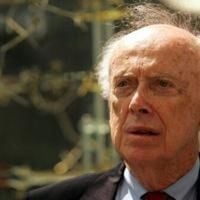James Dewey Watson, the renowned American geneticist and co-discoverer of the DNA double helix, has died at the age of 97. His passing, which occurred earlier this week in hospice care on Long Island following a brief illness, marks the end of one of the most influential—and controversial—careers in modern science. Watson’s death was confirmed on November 7, 2025, by his son and by Cold Spring Harbor Laboratory, the New York research institution where he spent much of his professional life, according to The New York Times and the Associated Press.
Born on April 6, 1928, in Chicago, Watson’s early fascination with natural history—especially birdwatching—set him on a path toward a lifetime of scientific discovery. He completed his undergraduate degree in zoology at the University of Chicago in 1947 and earned his PhD at Indiana University Bloomington in 1950. It was a fateful meeting with Maurice Wilkins at a 1951 symposium in Naples, Italy, that would shift the course of his career. There, Watson saw the x-ray diffraction pattern of crystalline DNA for the first time, an image that would ignite his obsession with uncovering the molecule’s structure.
Later that year, Watson began work at the Cavendish Laboratory at the University of Cambridge, where he met Francis Crick. Together, they embarked on a quest to solve the mystery of DNA’s molecular architecture. In March 1953, after poring over x-ray diffraction data—some of it generated in Rosalind Franklin’s lab at King’s College London and shared by Wilkins—the duo proposed the now-iconic double-helix structure. As described by the Associated Press, DNA is “a double helix, consisting of two strands that coil around each other to create what resembles a long, gently twisting ladder.” This breakthrough, published in Nature, would revolutionize the field of molecular genetics and lay the groundwork for future research on heredity, disease, and the very building blocks of life.
For their discovery, Watson, Crick, and Wilkins were awarded the 1962 Nobel Prize in Physiology or Medicine. Watson was characteristically forthright about the impact of their work. “Francis Crick and I made the discovery of the century, that was pretty clear,” he once remarked, according to People. Yet, he also admitted, “There was no way we could have foreseen the explosive impact of the double helix on science and society.”
Watson’s scientific career was not limited to DNA. He helped pioneer research on the structure of small viruses at Cambridge and, during his time at Harvard University, demonstrated the existence of messenger RNA (mRNA), a molecule now central to biotechnology and vaccine development. His leadership at Cold Spring Harbor Laboratory, where he served as director and president for 35 years, was instrumental in establishing the institution as a powerhouse in cancer genetics research. Perhaps most significantly, Watson played a key role in launching the Human Genome Project in 1990, successfully persuading both scientists and politicians to support the ambitious effort to sequence the entire human genome.
Watson’s influence extended beyond the laboratory. He was a prolific author, penning the best-selling memoir The Double Helix in 1968—an account that electrified a generation of scientists, including Nobel laureate Jennifer Doudna. The book, however, drew sharp criticism for its portrayal of Rosalind Franklin, whose x-ray data was crucial to the discovery of DNA’s structure. Watson himself later acknowledged these criticisms, writing, “I have been widely criticized for my characterization of Rosalind Franklin in my account of these events, The Double Helix, published in 1968. While Rosalind refused for a long time to countenance the idea that DNA was a helix, her work provided data that was absolutely critical to ours. Happily today, her contribution is properly appreciated, including by me in my afterword to The Double Helix.”
Despite his towering scientific achievements, Watson’s career was repeatedly overshadowed by controversy. He was accused of failing to give Franklin appropriate credit for her role in the DNA discovery, and his later years were marked by a series of incendiary public remarks. In 2007, Watson made comments linking race and intelligence that drew widespread condemnation. Although he issued a brief apology at the time, the damage to his reputation lingered. In 2019, following his reiteration of those views in the PBS documentary Decoding Watson, Cold Spring Harbor Laboratory stripped him of all remaining honorary titles and removed his portrait from its campus. As reported by GEN and The Guardian, these statements led to his complete removal from the institution he had helped shape for decades.
Watson’s personal life was, in some ways, as complex as his professional one. He married Elizabeth Lewis in 1968, and together they had two sons. The PBS documentary offered glimpses of Watson at home, including scenes with his son Rufus, who has lived with schizophrenia since childhood. In 2018, Watson survived a serious car accident near his home on the Cold Spring Harbor campus, a stark reminder of his mortality even as his scientific legacy seemed destined to endure.
Colleagues and critics alike have struggled to reconcile Watson’s scientific genius with his personal failings. Venki Ramakrishnan, a Nobel laureate in chemistry, summed up this tension in a commemorative article for the Medical Research Council’s Laboratory of Molecular Biology: “Few people have influenced modern molecular biology and genetics as much as Jim Watson… so it is a pity that his later life was marred by his extreme views on race, gender and genetic determinism. In the end, his contributions will long outlast his prejudices.”
Watson himself was candid about his own limitations and the shifting nature of his legacy. He once said, “After I’m dead, I’ll be more famous than I am now, because DNA gets more famous! DNA is not over-rated. Some things come and go; DNA won’t come and go.” It’s a sentiment as blunt as it is true. The double helix remains a symbol of the promise—and the complexity—of science itself.
Watson’s passing closes a remarkable, often tumultuous chapter in the history of biology. His discoveries changed the world, even as his personal views and actions sparked fierce debate. The story of James Watson is, in the end, a reminder that scientific greatness and human fallibility can—and often do—exist side by side.






